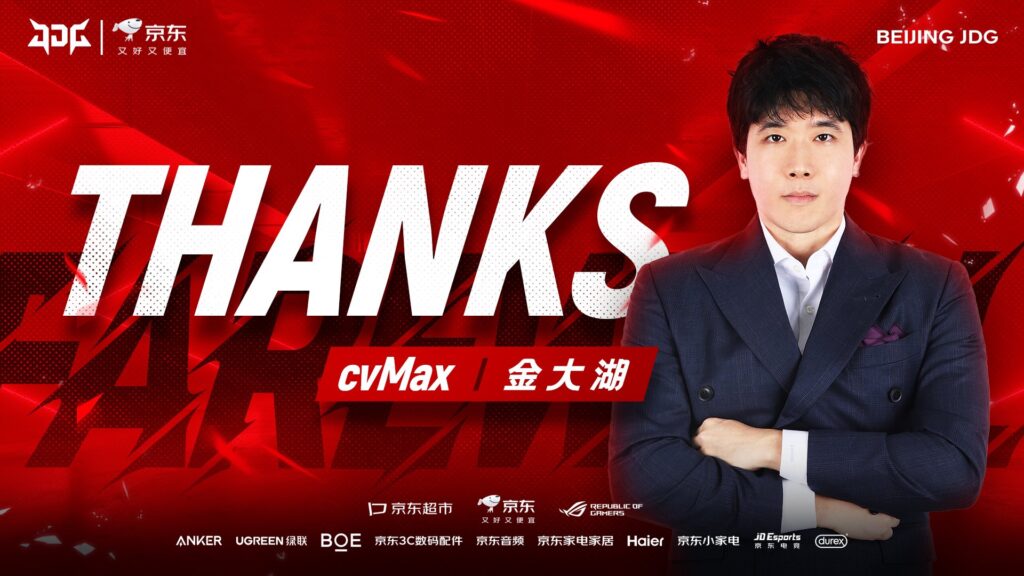
Here’s everything you need to know about one of the most important in-game concepts in LoL to win more games: scaling.
Image Credits | Riot Games
Scaling in LoL – What is it?
If you have been playing LoL for a while, you probably have heard of the term “scaling”. It’s usually used when comparing team compositions or champions, and how “x champions scales harder and better than champion y”. But what does the term scaling mean and how do we assess which champions scale better?
Scaling is quite a tricky and difficult concept to explain since it requires great game knowledge and always up-to-date information since champions can change their scaling based on the buffs and nerfs that he or she receives.
With the major mid-season changes coming in Patch 13.10 which include item changes as well, the numbers and variables will change once again, forcing players to adjust to the new meta and the new “scalings” of champions.
LoL is one of the most dynamic competitive games out there and this is caused by several factors which are always changing and evolving depending on how the players play or how champions behave. This also means that there are no clear right or wrong answers, but just considerations to make to understand which champions or teams are likely going to be more successful at certain points of the game.
The goal of this post is to help new players get a better idea of what scaling is and teach those who are not that familiar with the concept of how you should think about team comps and champions while playing the game.
Read more: LoL Patch Tier List
How it works
Scaling in LoL is typically referred to as the rate at which a champion is able to get stronger during the game. A champion’s strength is usually influenced by a myriad of factors, but mainly it’s about the champion’s kit, gold, and items. On top of that, you also have the champion’s own stats and growth rates, which are defined by the developers and can be tweaked around.
The Stat Scaling Spectrum
Aside from champions’ inherent stats, they also have the abilities which have different effects, base numbers and ratios. By having different combinations of bases numbers and AD and AP ratios, LoL creates some champions that are stronger early on, while others become relevant in the late game.
While it’s hard to exactly pinpoint how much each champion scales, we have general guidelines which are easier to remember and keep in mind when playing games and exploring new champions.
Since champions don’t get access to items and, therefore, stats, in the first stages of the game, the best early game champions are those who tend to have high base stats and numbers on their abilities. This means they deal more damage early on, and fall off later in the game as they will typically have lower ratios than a late-game champion. Even if you build many items, you won’t deal as much damage.
For a scaling champion, instead, this is the exact opposite: you will have lower base numbers but great ratios to compensate for them. Once you have enough gold to buy extra items and stats, then you will start becoming more and more relevant. Let’s take two champions in comparison to give a better idea.
Pantheon
Pantheon is the perfect example of a strong early-game champion: he has great high base damages as a passive which allows him to deal extra damage when champions are below 15% max health. His W-E-Q combo amounts to hundred of damage when executed properly and as soon as he can get some lethality, the armor penetration further amplifies his damage.
Image Credits | Riot Games
After hitting two items, however, Pantheon falls off quite heavily, for a couple of reasons. The longer the games lasts, the harder it becomes for Pantheon to walk and focus the enemy carries, and he usually has to rely on his ultimate to get back line access. This is further impacted by the increasing amount of crowd controls and resistance from the enemies, causing him even more trouble.
Moreover, Pantheon’s lower AD ratios caused him to fall off later on, and given most champions build lots of health, it becomes harder for him to take the enemies below the 15% maximum health threshold. Even though his new build with Eclipse and Black Cleaver extends his mid-game spike, he’s still bound to lose firepower in the later stages of the game.
Azir
On the other end of the spectrum, we have Azir, who is the exact opposite. Just like most control mages, Azir needs levels and items to really get rolling, growing stronger and stronger as the game goes on.
Not only does Azir have weaker stats early, but he also doesn’t get access to the stats he really needs to shine as a DPS mage carry: ability power and attack speed. More so than levels, Azir needs specific items to start dealing damage, namely Nashor’s Tooth and at least the Mythic item (which can be Luden’s Echo or Liandry’s Anguish).
Image Credits | Riot Games
By getting access to these items, Azir greatly increases his overall DPS and will begin to deal a lot more damage. Meanwhile, he gets more points into his abilities as he begins leveling up, further fueling his total damage output. Once you get to the third or forth item, and Azir is able to get into a position to summon the sand soldiers and keep auto-attacking, that’s when he technically “scaled”.
If the champion, however, falls heavily behind early on and it’s unable to reach those item spikes, then Azir won’t be able to unleash his full potential. So when playing champions like Azir, it’s much better to avoid fighting hard early on since he will become stronger as the game drags on.
Read also: Best Beginner champions in LoL
Other types of scaling in LoL
Outside of stat ratio and item scaling, champions can also scale through their abilities or passive effects. These are unique to every single League champion and they can impact their overall scaling alongside the rest of the kit or build paths:
Nasus
One of the most obvious examples that may come to mind is Nasus’s Q, Siphoning Strike, which builds additional stacks whenever you are able to kill a target with the ability. Since there is no upper limit to the total stacks, Nasus can theoretically get thousands and thousands of stacks in a game if he’s able to farm and get to that point, making him one of the best scaling top laners in the game. Whenever you play against him, your goal is to either decrease how many stacks he can get per minute. A great way is punishing him repeatedly, or just finishing the game before he can reach his late-game spike.
Veigar
Veigar can be considered the AP version of Nasus since he has a similar stacking mechanic with his passive and Q, granting extra ability power for each stack. While he can also build items to get his ability power, Veigar can go beyond the usual limits and stack infinitely. For that reason, we refer to Veigar as a scaling champion.
Rod of Ages
The new Rod of Ages is also considered a scaling item in LoL. While it grants a minimum level of stats, the item also grants extra stats for each minute after purchasing it, up to a maximum of 10. Whenever it’s fully stacked, the champion also gets an additional level, further increasing the stats and damage.
Other Item combination synergies
There are many other scaling item combinations. For example, Tear of the Goddess is an item that builds into Seraph Embrace and Fimbulwinter but it requires 360 stacks to unlock additional and stronger effects.
Now that there are new ADC items with the mid-season patch, the new Energized effects on items like Rapid Firecannon and Stormrazor allow champions to empower auto attacks. By stacking the items, you can compound the effects and increase the effectiveness of one another.
Read more: Best Champions to climb in soloQ
Best advice when playing scaling champions in LoL
Whenever you have scaling champions on your team, playing with a certain mentality will help you increase the chances of victory. Here are some pieces of advice you should consider.
Don’t play too aggressively and be patient
Considering scaling champions are typically weaker early on, the chances of you winning trades are going to be lower. Unless you are always able to get the upper hand on multiple instances, it’s hard for a scaling champion to get kills, so go overboard, especially in 1v1 situations. You always want to go for low-risk plays, and not force early-game objectives if it increases the chances of you dying.
You always want to keep in mind you’re getting stronger the longer the game goes, so time will be on your side: as long as you don’t fall behind too much from the start, you will find yourself in a commanding position and ready to carry the late-game fights.
Never surrender on scaling champions
Even if you concede more than what you would’ve liked, it’s always a good habit not to surrender in these situations. Mistakes are bound to happen, even at the highest Elos, and it can be the turning point for you. Considering Riot implemented shutdown gold, it’s even easier for teams and champions to make comebacks.
Always go for coordinated plays
The title basically says everything: playing as a team will lower the risk of you losing fights and giving away gold leads or kills. In an uncoordinated environment like solo queue, it’s probably one of the best ways to make sure you can win with scaling champions. As long as you can protect the right champions and let them scale, they will repay you later on.
How to play against scaling LoL champions
If you’re facing scaling champions, the goal is to understand what kind of conditions they need to reach and make sure they cannot get to that point or at least delay it.
Play and look to snowball as hard as possible
Snowballing is the most straightforward way to make sure enemy champions cannot scale. If you’re able to kill them or create a big enough lead, you can look to finish the game before they can reach their item spikes.
Understand which are the win conditions for both teams
Often a lower scaling team comp can prevail if they are able to play their team comp or execute their win conditions better. So assessing the win conditions is essential. If you have a split push comp, always aim to play in a way to take that advantage. If you have a pick-to-fight comp, look to play with the vision and punish the strongest enemy carries. By doing so, you might be able to win games that should’ve been lost.
What if an enemy scaling champion gets fed
This is one of the worst situations that can occasionally happen. There might be times when an enemy hyper carry picks up a few kills and greatly accelerate his scaling. Here is what you can do to deal with these situations.
Try to put all the resources in one basket
Whenever an enemy gets fed, you want to have someone who can shut him down and decelerate his scaling. One of the most direct ways is have someone on your team who can match that carry. In other words, you want to give as many resources as possible to the strongest ally and hope he can take down the enemy threat. For example, a jungler like Kha’Zix or Rengar is perfect to hunt down a scaling marksman like Jinx or Kog’Maw. It’s a high-risk, high-reward strategy, though: if your ally is incapable of killing it, then it will get increasingly more difficult to find opportunities to punish him.
Use shutdown gold or objective bounties to close the gap
Bounties are a fast way to get back into the game so a team should make full use of them whenever they are available. If the enemies get a substantial gold lead, it’s likely that bounties will be activated: try to pick the highest number possible, even if it means giving up a neutral objective or kill. You won’t be able to contest the objectives like Dragon regardless, and if you’re heavily behind, the gold earned by the enemies is going to be much lower than the total gold earned by your team.
Read more: What is lethality in LoL?







